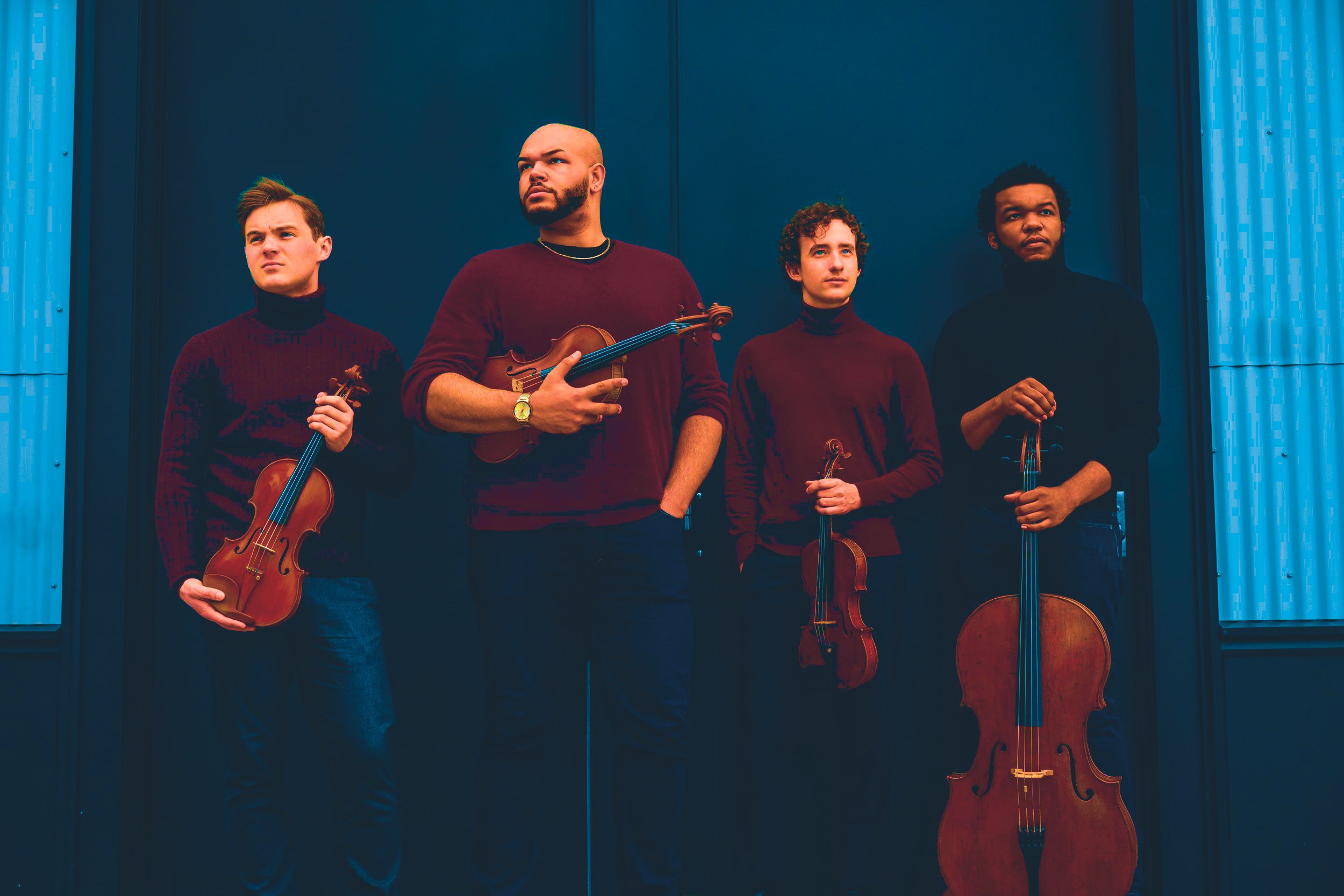By Jay Harvey
Philadelphia's Curtis Institute, long among the most prestigious American conservatories for advanced musical education, generated the Dover Quartet, which comes to Indianapolis March 13 under the auspices of the Ensemble Music Society. (The 7:30 p.m. concert, with music by Turina, Schubert, and Janacek, is at the Indiana History Center.)
A few years before the quartet's formation in 2008, Julianne Lee had graduated with a double major in violin and viola. She launched her career as an orchestra player, becoming a first-desk violinist in the Boston Symphony and the Boston Pops orchestras.
At the beginning of the current school year, she renewed her Curtis connection again as the Dover's new violist. Her new colleagues are Curtis-educated founders of the ensemble, whose Indianapolis appearances go back to 2019. The Dovers have a residency at Curtis, a teaching and performing home base from which they go on tours of the kind that will bring them here.
Dover Quartet on the move: Camden Shaw, Julianne Lee, Bryan Lee, and Joel Link.
Founded a century ago by Mary Louise Curtis Bok, daughter of music patron and magazine and newspaper publisher Cyrus H.K. Curtis, the Curtis Institute has a nearly unique free tuition policy for students. They often fulfill their youthful promise by going on to distinguished careers.
Institutionalized opportunities to broaden student development had a life-changing benefit for Lee. A violinist from early childhood, growing up in a Korean family with two cellists as family members, she was receptive to expanding her horizons in the string family, too. She learned as a Curtis junior of a program that would permit a double major in violin and viola. Borrowing an instrument from the school to get started, she was able to land instruction from a distinguished teacher, Joseph de Pasquale.
"They are so supportive of the students," Julianne Lee marvels. "Learning the alto clef was the hardest part of it," she admitted. "The sound was already in my ear — the low register."
Of the Curtis influence on her new professional status, Lee told me by phone: "I think that there's something there. Joel and Bryan's teachers have been my teachers as well. How we heard music was similar. You play what you hear, so I think we hear the same way. It's no exaggeration that it felt easy with them from the first minute."
Lee's audition went so smoothly that she was practically a shoo-in for the quartet's viola vacancy last year. As Dover cellist Camden Shaw told Strings magazine: "... when we first read with her, it was clear that her voice, as it were, came through with such clarity that we fell in love with the musician beyond the specific viola.."
With such a close working relationship, specific musical and educational affinities don't tell the whole story. "Another thing we have in common [besides Curtis] is that we are the youngest child in our families," she said. "So we have stories we exchange and even discussions about that."
She sums them up as "little personality things" about growing up as the "baby" of a family. Together with her love of travel and and a lifelong passion for chamber music, which she was able indulge while holding down orchestra positions, there seems to be a host of ways to count how thoroughly Julianne Lee belongs in the Dover Quartet's viola chair.




